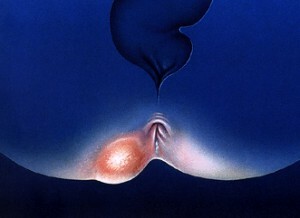 The inflammatory process that can develop as a result of the development of paraproctitis and develop into a chronic form of the flow, in medical terminology has been termed an anus fistula.
The inflammatory process that can develop as a result of the development of paraproctitis and develop into a chronic form of the flow, in medical terminology has been termed an anus fistula.
The formation of anal fistulas is called a fistula of the rectum.
This pathology represents some formation of a pathological course that can take place, starting from the rectum and ending with all accompanying soft tissues.
Medical studies prove the fact that fistula can be called chronic paraproctitis( more than 95% of cases).
It follows that incorrect and untimely treatment of paraproctitis in acute form can lead to more severe consequences. Treatment of this kind of inflammation can be carried out only by surgical intervention.
Contents
- Anatomy of the problem
- Causes and risk factors
- Variations of the pathology
- Symptoms of the disease
- Diagnosis of the disease
- Treatment objectives and methods
- An independent solution to the problem - is it there?
- Possible complications
- Preventive measures
Anatomy of the problem
During the formation of the fistula, there is a hole of a pathological nature, which in turn can connect several cavities.
The presence of anorectal fistula means a hole underneath that will connect the rectum to any other adjacent cavity.
Very often, the patient may have additional openings in the anus. Because of the appearance of a strong inflammatory process on the skin, most people believe that this has grown an ordinary boil, so treatment of this pathology does not always begin in time.
Causes and risk factors
The appearance of anal fistula is associated with the following reasons:
- development of paraproctitis in acute form( inflammation of the purulent nature near the rectum area);
- formed abscess of pararectal tissue;
- prolonged course of Crohn's disease;
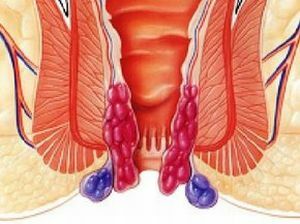
- presence of a diverticulum of a rectum;
- diagnosis of intestinal tuberculosis;
- is a malignant tumor in the terminal portion of the rectum;
- chronic constipation and hemorrhoids;
- proctitis at various stages of percolation;
- formation of cracks in the anus;
- very often fistula can occur after delivery in women, which is due to the presence of strong soft tissue ruptures during the passage of the child through the birth canal;
- the course of such ailments as syphilis of the rectum, actinomycosis and chlamydia;
- as well as on the development of pathology can be affected by injuries and injuries of the pelvic organs.
In the risk group are also people who have in their history the following pathological abnormalities in the body:
- repeated recurrence of Crohn's disease;
- abscesses of anus of bacterial origin;
- presence of diverticulitis in chronic course;
- diagnosed with tuberculosis( intestines);
- presence of malignant neoplasms;
- formation of chakra in the anus due to syphilis;
- severe infection of the internal organs.
Varieties of pathology
It is known that anal fistula can have an external opening, and can develop without its presence.
Depending on this, the following types of fistula are identified:
- The incomplete has an inlet, but there is no external output. Very often fistula of incomplete character passes into full, because the organism is adversely affected by a large number of pathogens and microorganisms. With the development of this type of fistula, the symptoms of an illness are almost not manifested, which is why it is impossible to diagnose a disease in time. In the case of detection of fistula, its treatment takes a lot of time and effort, both from the patient and medical professionals.
- Full .This view has a hole that begins in the rectum and ends with a wound near the area of the anal opening. There can be many such holes, and when it is combined into one, a huge wound forms on the skin. Treatment of such a fistula requires urgent surgical intervention.
- Internal .This opening begins in the rectum, passes through the near tissue and again returns to the intestine.
There is another classification depending on the affected muscles of the sphincter fistula can be:
- Intrasfincter .It occurs in 35% of all patients. If improperly treated, it can be recurrent. For him, there is an external hole, which consists of one channel.
- Transsfunctional .It consists of several holes, which subsequently cause the formation of purulent pockets and scars.
- Extrasfinctory .It develops after a severe acute paraproctitis. It occurs in 90% of all cases. Such a fistula consists of a pair of holes. One of which begins in the rectum, and the other ends in the anal passage.
Depending on the type of anal fistula, a specific method of treating the disease is prescribed.
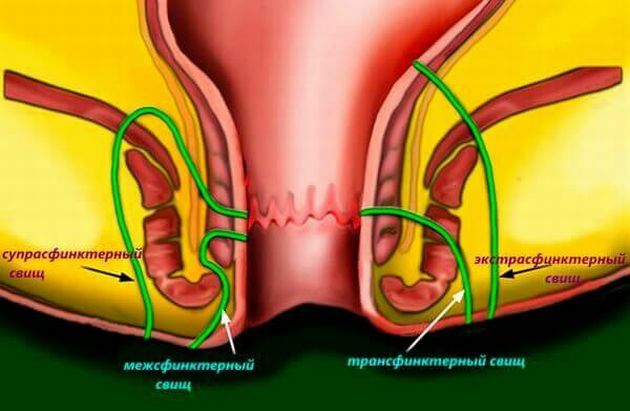
Symptoms of the disease
Most often, the initial symptoms of the disease do not pay due attention.
The initial course of the fistula, which is accompanied by a strong inflammatory process, can be ignored, as a result of which the ailment can be diagnosed only at advanced stages of its course.
Nevertheless, on the fistula of the anus indicate very specific symptoms:
- the occurrence of acute pain in the anus;
- constant release of blood, mucus and feces next to the affected anal opening;
- pain will be pronounced especially at the time of the act of defecation;
- severe redness of the affected area on the skin;
- sharp increase in body temperature and constant weakness.
Diagnosis of the disease
To establish the correct diagnosis, in addition to consulting a proctologist, a number of medical examinations will be required:
- ultrasound diagnostics with the introduction of contrast medium;
- carrying out fistulography;
- diagnosis using a button probe;
- study with the introduction of contrast in the rectum;
- procedure for anoscopy.
Objectives and methods of treatment
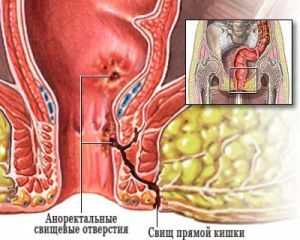 The main goal of treatment of the fistula of the anus is to eliminate the manifestations of the disease, namely, to reduce the inflammatory process and avoid the formation of purulent wounds.
The main goal of treatment of the fistula of the anus is to eliminate the manifestations of the disease, namely, to reduce the inflammatory process and avoid the formation of purulent wounds.
After the examination, the specialist decides which method is best used to treat the developed disease.
If a patient is diagnosed with a purulent fistula, then an operation to remove it must be performed. During the procedure, the surgeon must also remove the inner hole. This further helps prevent the recurrence of pathology.
The remaining wounds heal after surgery in a short time. After this, you need to regularly consult a doctor. 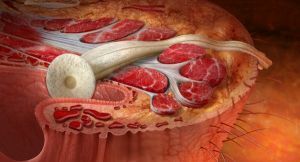
Depending on the patient's well-being, the specialist can prescribe additional treatment in the form of drug use.
Most often, doctors prescribe painkillers, antibiotics and antibacterial anti-inflammatory rectal suppositories. Such treatment is also recommended for the prevention of repeated relapse of the disorder.
An independent solution to the problem - is there any?
Some patients most of all trust folk remedies and that is why they prefer to cope with the disease in unconventional ways.
To cure the fistula of the anus at home is possible with the help of infusions and decoctions from medicinal plants:
- For 400 milliliters of water, several spoons of St. John's wort are needed. After that, the liquid is boiled for several minutes. Then the leaves are removed and put on a plastic bag. When they cool slightly they can be applied to the inflamed area. From the resulting decoction liquid is used for hygiene procedures.
- Effective decoction based on water pepper, oak bark and linseed colors .All ingredients are poured with melted fat. Such a preparation must be heated before use and applied with a special tampon to the diseased area.
Possible complications of
If untimely treatment is possible, the risk of developing the following complications:
- changes in scarring in muscles;
- change in the shape of the perineum and anus;
- weakening of sphincter muscles;
- development of pectenosis;
- formation of malignant neoplasm.
Preventive measures
In order to avoid the appearance of fistulas, it is important to follow the following recommendations for the care of your body: 
- To prevent infections can not enter the colon, it is important to regularly perform hygienic procedures( washing of the genitals and anus).
- When anal fissures are formed, they must be treated immediately.
- It is important to monitor the diet. Food should be useful, which will prevent the formation of constipation and hemorrhoids.
- If you have a feeling of discomfort in the anal passage, you need to seek medical help.
Anal fistula refers to dangerous inflammatory processes that can be avoided. If you do not allow the development of diseases that affect the organs of the digestive tract.
Remember that untreated hemorrhoids or paraproctitis can cause fistula development, the treatment of which can last for a long time and painfully!
